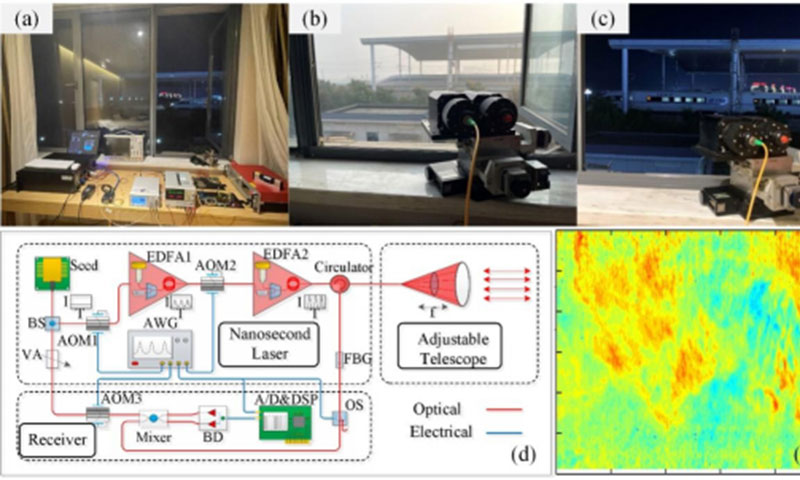Chinese scientists make significant breakthrough in hyperfine wind observation with coherent Doppler wind LIDAR

Photo: University of Science and Technology of China
Chinese scientists have recently made a significant breakthrough in the hyperfine wind observation with coherent Doppler wind LIDAR, demonstrating for the first time in the world the high spatial and temporal resolutions of 3 meters and 0.1 seconds respectively.
Hyperfine wind structure detection is important for aerodynamic and aviation safety.
Pulse coherent Doppler wind LIDAR (PCDWL) is a widespread wind remote sensing method of great importance. It has been widely used in various areas including wind turbine optimization, airport surveillance for wind fields, meteorological guarantee for aviation safety, city air pollution monitoring, research on atmospheric dynamics and gravity wave propagation, and validation of numerical models for weather prediction.
However, meter scale and sub-second resolution for wind structure detection are still challenging for PCDWL.
To further improve the spatial and temporal resolution of PCDWL, scientists optimized the optical design of a nanosecond fiber laser and telescope and adopted a new algorithm.
A fine wind structure observation experiment was performed by a research team at the Suzhou High-speed Railway Station in East China's Anhui Province.
Two days of continuous observation of the wakes of the Chinese high-speed train show detailed hyperfine wind structures.
The PCDWL worked continuously unattended over 100 hours and obtained a continuous observation of the high-speed railway wake with a speed of 350 kilometers per hour at a high spatial and temporal resolution of 3 meters and 0.1 seconds.
The research team from the University of Science and Technology of China in Hefei, Anhui, published the study on the international scientific journal Optics Letters which covers the latest research in optical science.
Global Times


